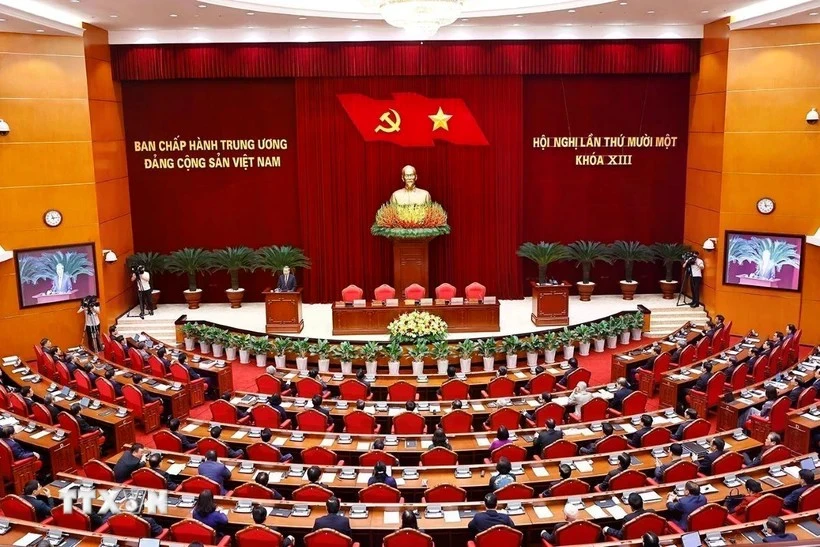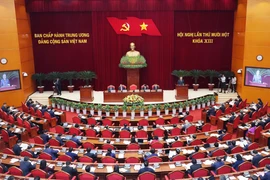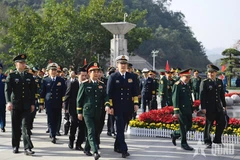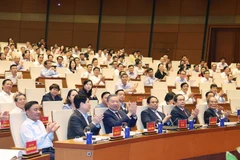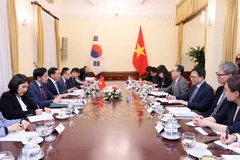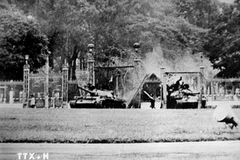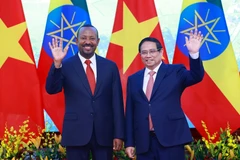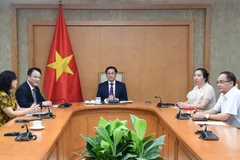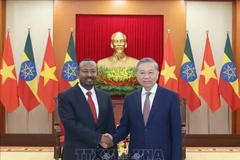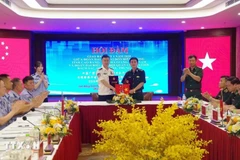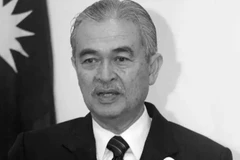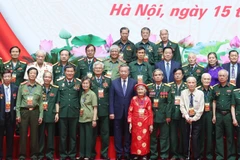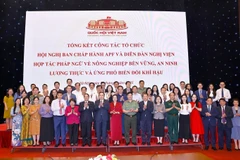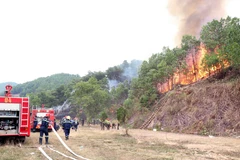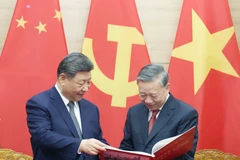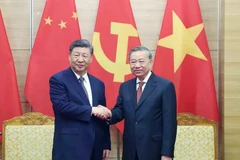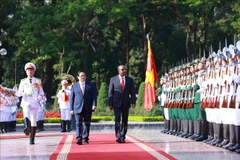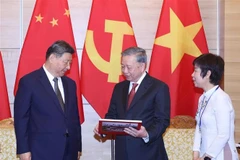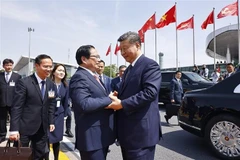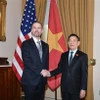Hanoi (VNA) – The upcoming merger of provincial-level administrative units is a step towards organising the national development space more efficiently, fostering intra-regional and inter-regional connectivity, leveraging the comparative advantages of each region, and enhancing national competitiveness.
On April 14, Deputy Prime Minister Nguyen Hoa Binh signed Decision No. 759/QD-TTg, approving the project on the rearrangement and reorganisation of administrative units at all levels, as well as the building of a two-level local government model.
Earlier, on April 12, in its Resolution No. 60-NQ/TW issued at the 11th plenum, the 13th Party Central Committee decided that the number of provincial-level administrative units after the merger is 34, consisting of 28 provinces and six centrally-run cities. Additionally, the merger of commune-level administrative units will reduce the total number of such units nationwide by approximately 60–70% compared to the current number.
According to the project, 11 provincial-level administrative units will not be subject to mergers, namely Hanoi city, Hue city, and the provinces of Lai Chau, Dien Bien, Son La, Lang Son, Quang Ninh, Thanh Hoa, Nghe An, Ha Tinh, and Cao Bang. The 52 remainders will undergo mergers, forming 23 new provincial-level administrative units.
The ultimate goal of this move is to create a development space for the new administrative units that aligns with the National Master Plan for the 2021–2030 period, with a vision to 2050.
After nearly 40 years of Doi moi (renewal), the country's development space organisation still faces many limitations. The development space remains fragmented by administrative boundaries, regional connectivity is still problematic, and development investment is scattered while resources haven't been concentrated to shape the regions that lead and guide the country's economic growth. Additionally, a comprehensive and modern national infrastructure framework has not been established yet.
The main causes of these issues include a dispersed development mindset that lacks focus and priorities, the absence of a national-level comprehensive plan to clearly define spatial development models across the country, a lack of mechanisms and policies to promote inter-sectoral and inter-regional economic development, and persistent localism.
Therefore, the merger this time is also a step towards focus- and target-driven development. Accordingly, efforts will be concentrated on regions that have favourable conditions such as geographical location, socio-economic infrastructure, skilled human resources, and other advantages for development in order to form driving forces, economic corridors and growth poles that will create a ripple effect to stimulate fast, efficient, and sustainable economic growth across the country. At the same time, it ensures the creation of appropriate mechanisms, policies, and resources that match the economy's conditions to guarantee social welfare for disadvantaged areas and gradually narrow the gap among regions.
This move also aims to use resources, particularly land, water, forest, and minerals, more effectively and efficiently.
Furthermore, it seeks to organise the national development space in a way that connects mainland areas with maritime spaces; efficiently exploit and utilise underground, marine, and aerial spaces; link domestic economic corridors with regional and international ones; and closely combine socio-economic and cultural development with national defence and security safeguarding.
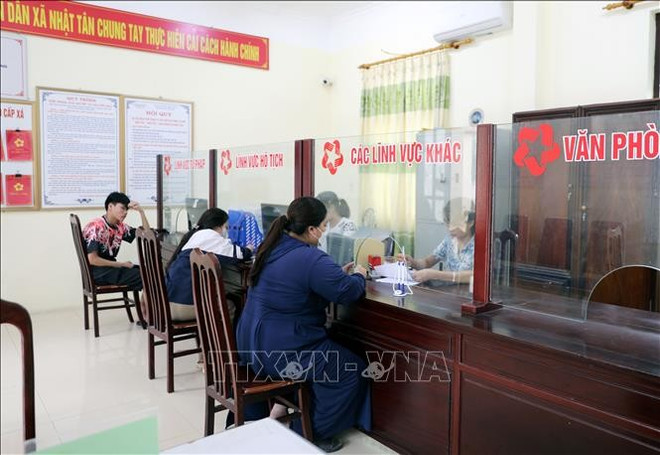
Currently, only 28 out of the 63 provinces and cities have coastal access. Therefore, the merger is aimed at expanding access to the maritime space which holds strategic importance for both economic growth, national defence, and long-term development.
It has been carefully considered, taking into account numerous factors to achieve sustainable and long-term development.
For example, the process of merging Thai Binh and Hung Yen into a new Hung Yen province is not about "one province overpowering the other," but rather about "combining strengths for development."
After the merger, the new province will have a natural area of more than 2,500 square kilometers (double the size of the old Hung Yen) and a population of over 3 million people (1.2 million from the current Hung Yen and 1.8 million from Thai Binh). This serves as a foundation for forming a large domestic market and provides scale-related advantages for manufacturing and service sectors. In addition, the elimination of administrative boundaries between the two provinces will facilitate the free flow of capital, labour, and technology, thereby optimising existing resources.
According to experts, the merger will transform two separate "pieces" into a unified whole, creating a new economic space. Hung Yen's industrial zones can directly connect with the abundant labour force from Thai Binh, while agricultural products from the latter can find stable outlets through the former's logistics system. This could potentially result in the development of a leading economic centre in the Red River Delta in the future.
Meanwhile, the fact that 11 provincial-level administrative units are not part of the merger process is not about "favouritism" but rather depends on various factors such as population, area, geography, economy, history, and culture.
For example, the two provinces of Nghe An and Thanh Hoa in the north-central region still have significant internal potential and advantages. They could be considered a "mini-Vietnam" due to their diverse terrains—mountains, plains, sea, and border areas, along with various transport infrastructure facilities like airports, seaports, and expressways.
The naming of the new administrative units has been carefully studied and thoughtfully considered, with factors like tradition, history, and culture taken into consideration. Priority is given to using one of the existing names of the provinces before their merger, in order to minimise impact on local people and businesses who would otherwise have to go through the process of updating paperwork, geographic indicators, and other records.
The decision on where to place the centre of a new province also follows clear criteria: that place must have a favourable geographical location, well-developed socio-economic infrastructure, particularly in terms of transportation, and conducive connectivity with other areas within that province/city, major cities, as well as with national economic hubs or the maritime space.
The administrative - political centre of a new administrative unit must have room for future development, accord with the socio-economic development direction of the newly merged unit, and ensure harmony and balance. This will prevent disparities between the regions after the merger while also maintaining national defence and security.
Besides, each new province will also gain opportunities to develop more economic, cultural, and tourism centres on the basis of old localities.
It is necessary to recognise that the restructuring of provinces and cities is aimed at creating space for long-term development – not just for local areas, but for the ultimate goal of the common development of the country and its 100 million people.
"Losing a province name" or being "far from a province's centre" are natural concerns of people. However, the national vision and the supreme interests of thecountry must take precedence over these local sentiments!./.
